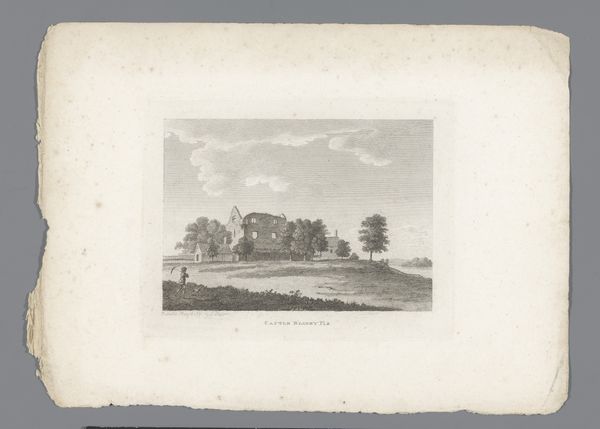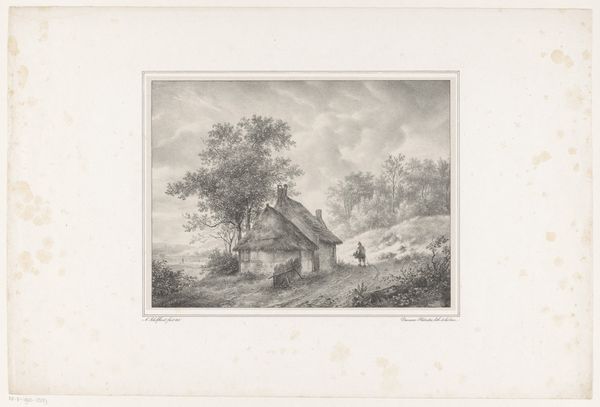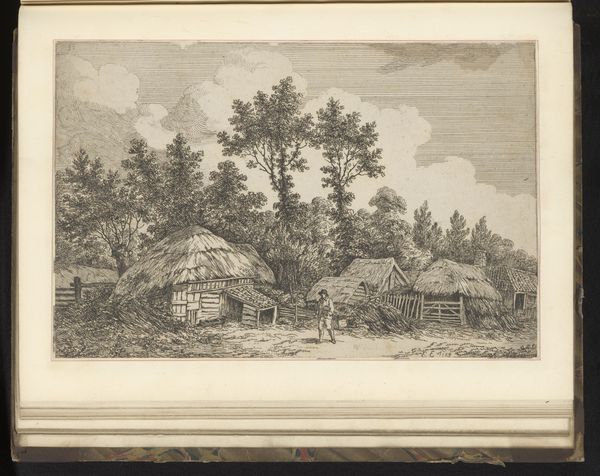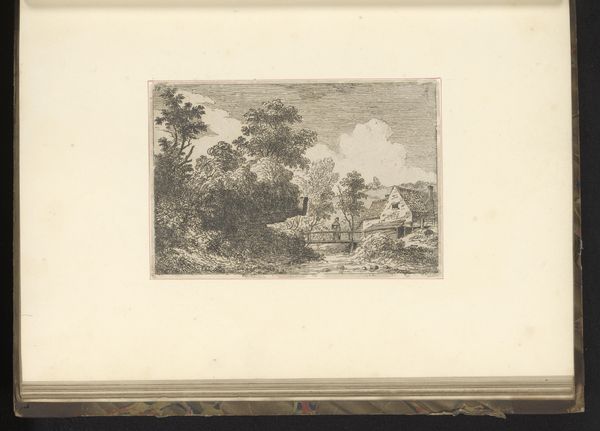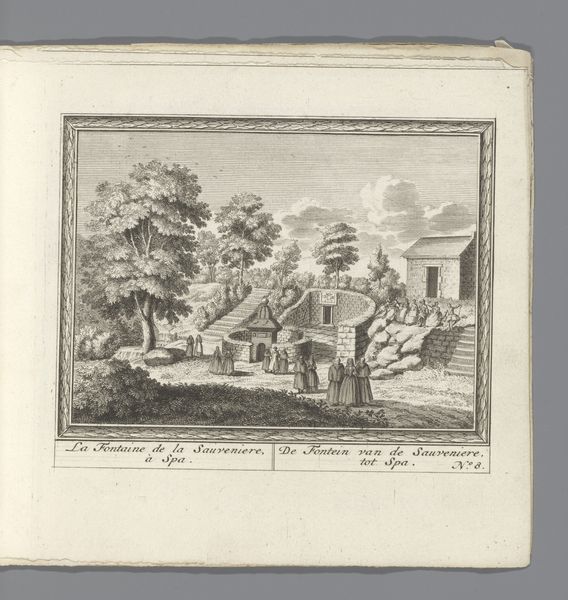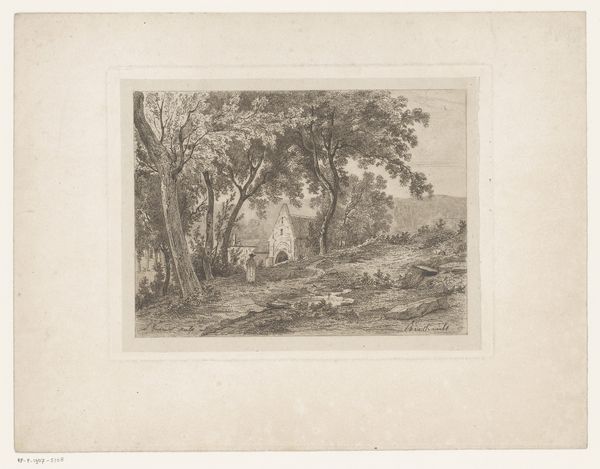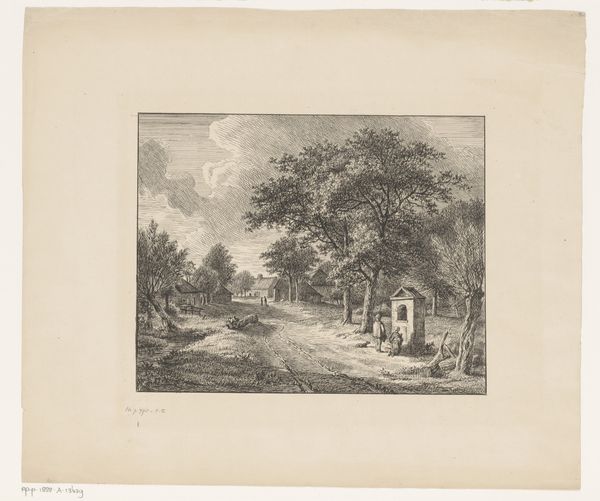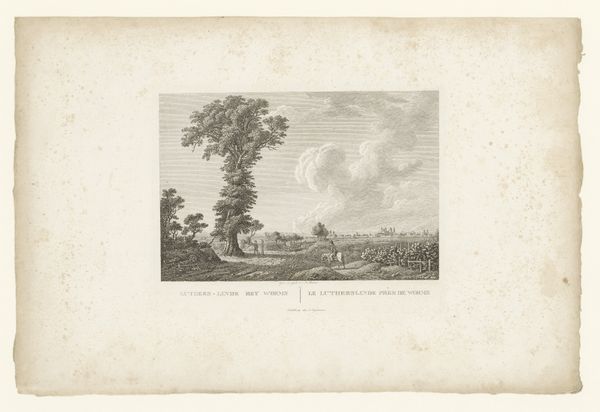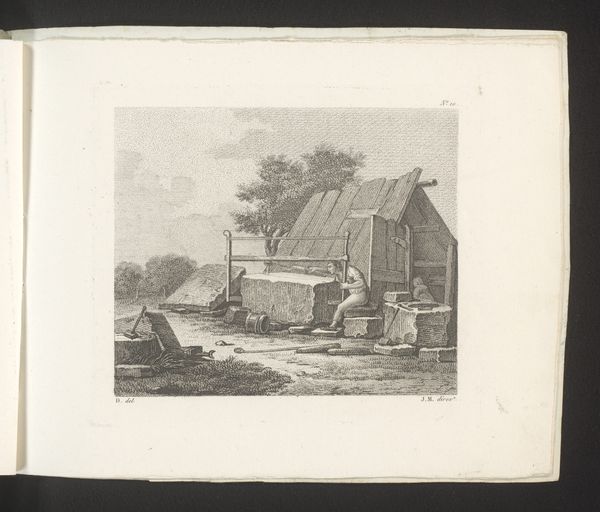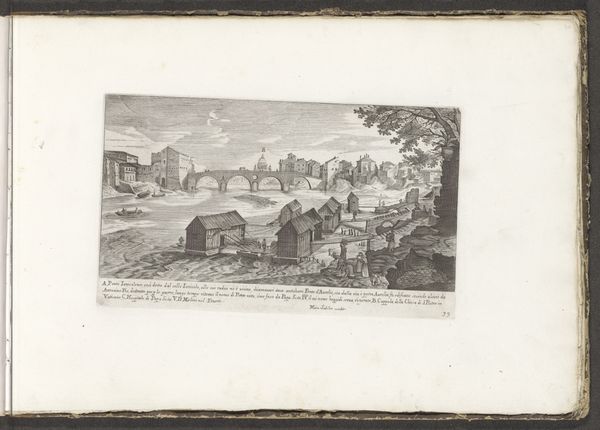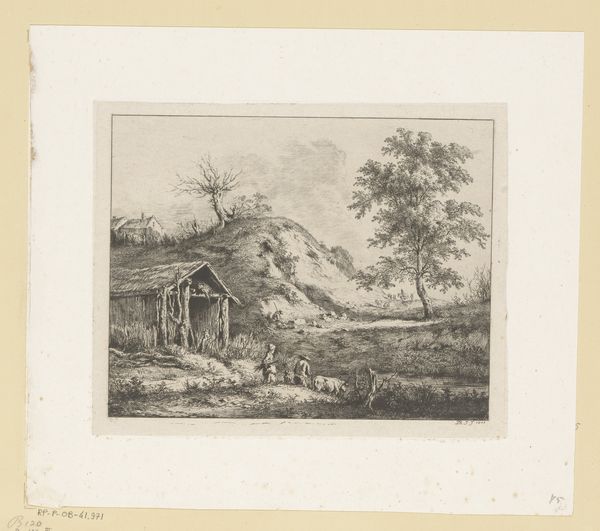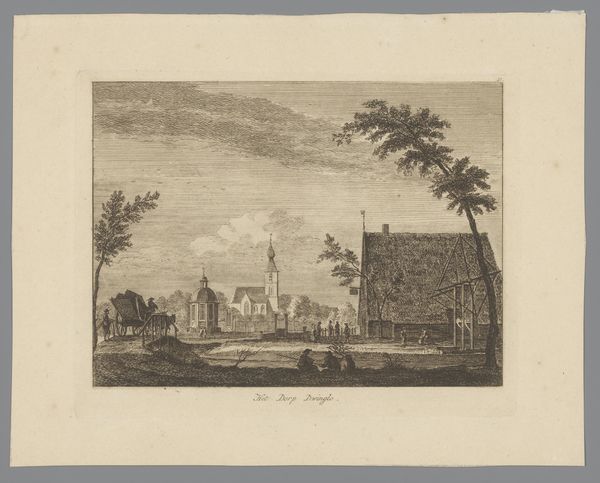
Dimensions: height 204 mm, width 120 mm
Copyright: Rijks Museum: Open Domain
Curator: This drawing is called "Landschap met wandelpad en een rivier," or "Landscape with a Walking Path and a River." It's attributed to Edward Edwards, dating from around 1748 to 1806, and the Rijksmuseum holds it now. Editor: It’s so delicate. All those tiny ink lines creating such detail… it almost feels fragile, like a faded memory. I wonder what kind of paper he used. Curator: He worked on paper, yes, using ink to evoke a very specific mood – think of the period's embrace of Romanticism. There's a yearning for simpler times evident in the composition. The building looks modest, the figures small against the wider landscape. Editor: I’m intrigued by that building – or are there two structures? The primary one looks to be constructed with a meticulous attention to line, indicating wood, stone or perhaps brick. See the use of ink washes to build volume around it? The building materials suggest regional availability and economic considerations too. Curator: Precisely. Edwards wasn't just sketching a pretty view. He was engaging with ideas about the virtuousness of rural life, making reference to Dutch Golden Age landscapes of the previous century, although this scene perhaps carries a certain British sensibility about it. The placement of the figures on the path almost suggests they're passing through, on their way to this place. Editor: And did Edwards himself construct it? That fence, or any of these other structures? How was ink locally sourced and processed in relation to drawing paper during that period, or Edwards' socio-economic context, given those factors? These elements ground the romance and bring a needed understanding of how his process, materiality and environment was situated in relation to society as a whole, wouldn't you say? Curator: Indeed. The work engages the viewer in contemplation of nature's grandeur. Yet the path hints at accessibility; this wasn't a wilderness entirely separate from human experience. I would go further in postulating this image as part of a growing market for picturesque views that developed during this time, where landowners and estate owners would cultivate idealized images of their holdings for status or revenue through engravings and illustrations. Editor: Well, seeing all of that fine pen work, and those earthy tones—imagining how Edward Edwards layered that ink and thinking of what material, environmental conditions influenced each decision he took helps my own vision for understanding not only Edwards, the drawing, and it's importance - but what the history means through process, materiality and our relationship to land today. Curator: Yes, appreciating how artistic visions connect with tangible material and political contexts really makes this more rewarding. Editor: It certainly does, in a different light.
Comments
No comments
Be the first to comment and join the conversation on the ultimate creative platform.
